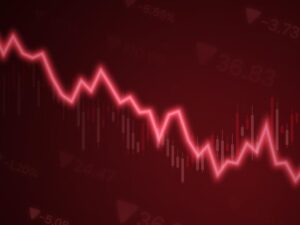Intel Stock Takes a Hit: What You Need to Know
Intel (NASDAQ: INTC) is facing a notable downturn, with its stock plummeting by as much as 8.7% during today’s trading session, before settling around a 4.5% decrease by mid-afternoon ET. What’s behind this sharp decline, and what can investors glean from the current situation? Let’s break it down.
The TSMC Announcement and Market Reaction
The primary catalyst for today’s sell-off appears to be the announcement from Taiwan Semiconductor Manufacturing Company (TSMC). During a high-profile visit to the White House, TSMC’s CEO revealed a substantial $100 billion investment aimed at expanding its U.S. manufacturing operations. This news left some investors hoping for a potential acquisition of Intel’s foundry business disappointed.
In the build-up to this announcement, there was speculation that TSMC might either acquire Intel’s foundry unit or form a partnership that could revitalize the struggling company. The absence of any such development has prompted a quick sell-off as optimism turned to distress.
Weighing the Impact of Increased Competition
One of the key concerns triggered by TSMC’s announcement is the increased competition Intel will likely face on its home turf. With TSMC investing heavily in U.S. operations, industry analysts are assessing the implications for Intel’s already beleaguered foundry business. The addition of a formidable competitor like TSMC could further complicate Intel’s path to recovery, particularly as the demand for semiconductors continues to surge due to technological advancements in various sectors, including artificial intelligence.
Future of Intel’s Business Model
As speculation about spinoffs and potential acquisitions swirls, it’s crucial to understand how these developments could shape Intel’s future. Rumors have suggested that Intel may be looking to sell parts of its fabrication business, and some investors believe that any successful transaction could provide a needed boost to the company’s stock. Additionally, Broadcom has shown interest in acquiring portions of Intel’s chip design business, which could also contribute to strategic realignment.
In light of these developments, investors must remain vigilant, weigh the potential upsides against market realities, and consider how advancements in AI and domestic semiconductor production influence Intel’s overall value proposition.
An Opportunity in Uncertainty
Investors frequently wonder if they’ve missed out on opportunities with successful stocks, especially during tumultuous times like this. However, history reveals that downturns can often present unique buying opportunities.
At Extreme Investor Network, our expert analysts are continually monitoring market fluctuations and identifying emerging trends. In rare instances, we issue a “Double Down” recommendation for companies poised for a breakout—a chance to invest before the price potentially skyrockets.
Numbers That Speak Volumes
Consider the impressive returns from our past recommendations:
- Nvidia: A $1,000 investment when we doubled down in 2009 would be worth approximately $295,759 today!
- Apple: Investing $1,000 in 2008 has turned into about $45,128!
- Netflix: A $1,000 investment made in 2004 could have grown to $525,108!
Currently, we are spotlighting three companies with strong "Double Down" alerts—opportunities that may not come around again anytime soon.
Staying informed and connected with expert analyses can empower your investment decisions and help you navigate these complexities.
Don’t miss out on your chance to capitalize on promising stocks during this turning point. There’s always a window of opportunity—are you ready to seize it?
Disclaimer: Investment returns are based on historical data as of March 3, 2025. Past performance is not indicative of future results. Always perform your own research or consult a financial advisor.

